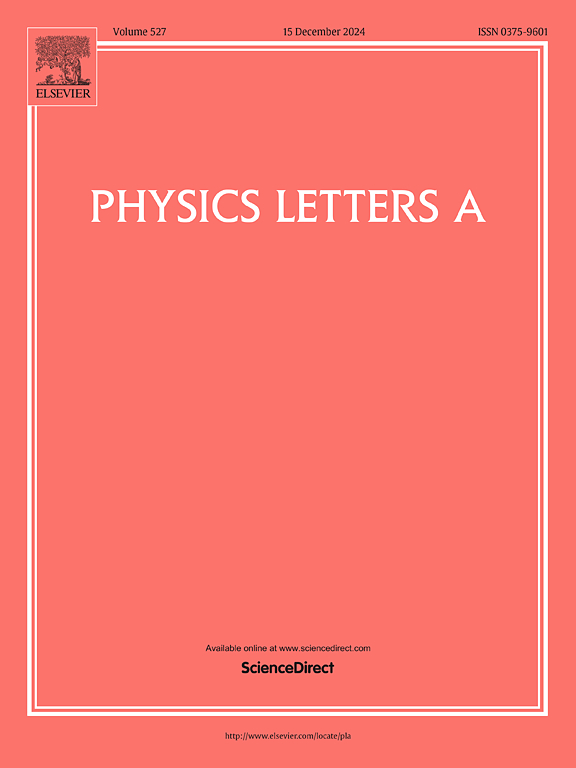Sensitivity analysis and dynamics of optical dromions in conformable generalized nonlinear Schrödinger systems
IF 2.3
3区 物理与天体物理
Q2 PHYSICS, MULTIDISCIPLINARY
引用次数: 0
Abstract
In this research, we explore the intricate dynamics of soliton solutions within optical communication systems, a domain critical for modern telecommunications. Employing an innovative new extended direct algebraic approach, we unveil a fresh set of optical solitons and other solutions tailored to govern (2+1)-dimensional nonlinear dynamically adaptive fractional generalized Schrödinger systems. These systems form the foundational framework for understanding the propagation of solitary waves in the complex form of optical communication networks. Our investigation yields a diverse spectrum of optical soliton solutions, ranging from the classic dark and bright solitons to more complex forms such as dark-bright combinations, periodic structures, and singular wave solutions. These solutions, characterized by hyperbolic and trigonometric functions, represent various physical phenomena that manifest in optical fibers under different conditions. To ensure the validity and accuracy of our results, we rigorously verify our derived solutions using mathematical tools, particularly leveraging the capabilities of Mathematica. This validation process underscores the robustness and reliability of our findings, instilling confidence in their applicability to real-world optical systems. To provide a comprehensive understanding of the physical properties of these soliton solutions, we employ visual representations such as 2D and 3D plots, contour maps, and density graphs. These graphical depictions offer insights into the behavior, stability, and propagation characteristics of the solitons, enriching our comprehension of nonlinear dynamics in optical communication systems. Moreover, the sensitivity analysis of the problem is also analyzed. Ultimately, our study not only advances the theoretical understanding of soliton dynamics but also lays the groundwork for practical applications in the design and optimization of optical communication networks. By elucidating various soliton phenomena encountered in mathematical physics and engineering, our research opens new avenues for exploration and innovation in this critical field.
求助全文
约1分钟内获得全文
求助全文
来源期刊

Physics Letters A
物理-物理:综合
CiteScore
5.10
自引率
3.80%
发文量
493
审稿时长
30 days
期刊介绍:
Physics Letters A offers an exciting publication outlet for novel and frontier physics. It encourages the submission of new research on: condensed matter physics, theoretical physics, nonlinear science, statistical physics, mathematical and computational physics, general and cross-disciplinary physics (including foundations), atomic, molecular and cluster physics, plasma and fluid physics, optical physics, biological physics and nanoscience. No articles on High Energy and Nuclear Physics are published in Physics Letters A. The journal''s high standard and wide dissemination ensures a broad readership amongst the physics community. Rapid publication times and flexible length restrictions give Physics Letters A the edge over other journals in the field.
 求助内容:
求助内容: 应助结果提醒方式:
应助结果提醒方式:


